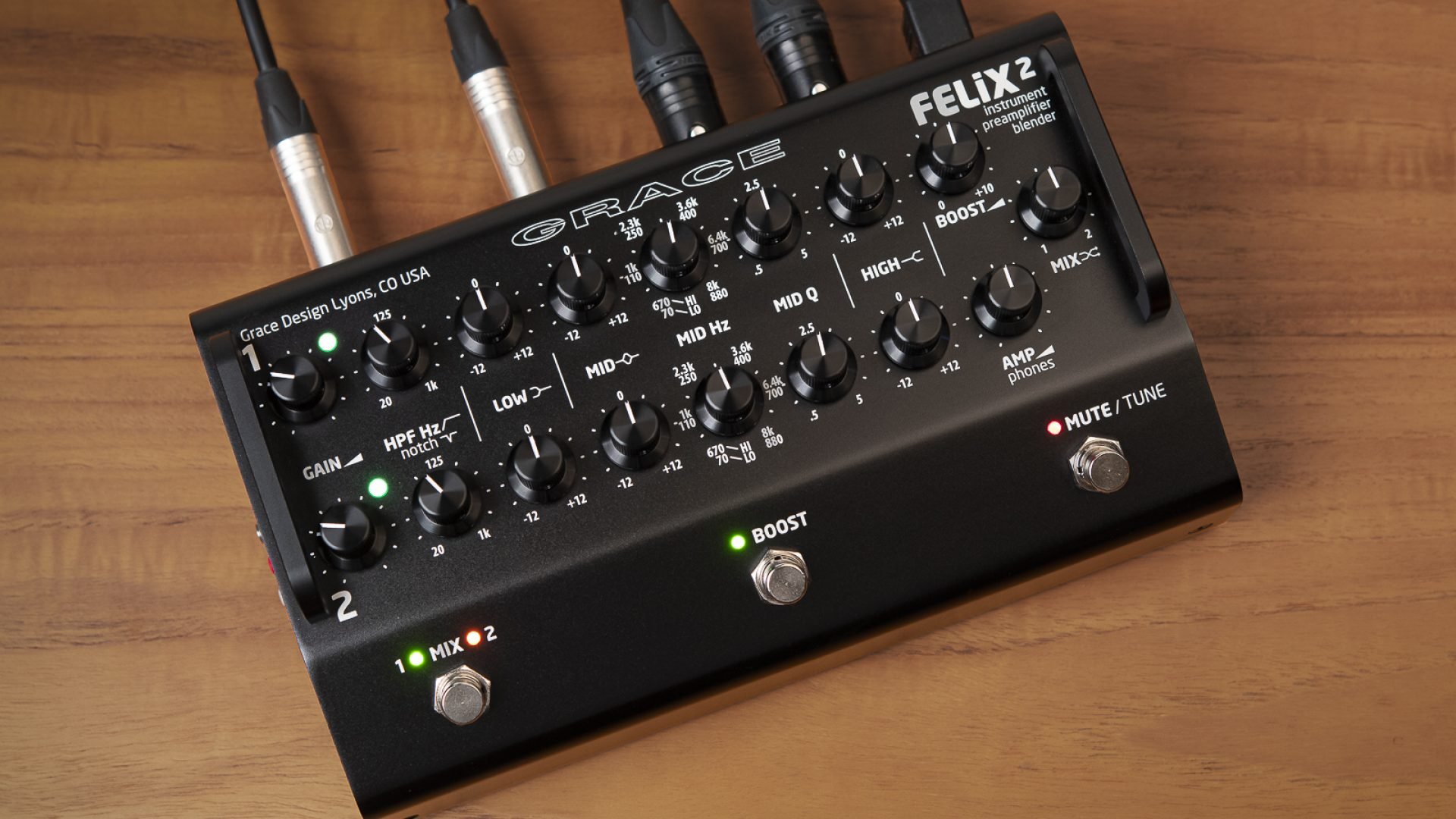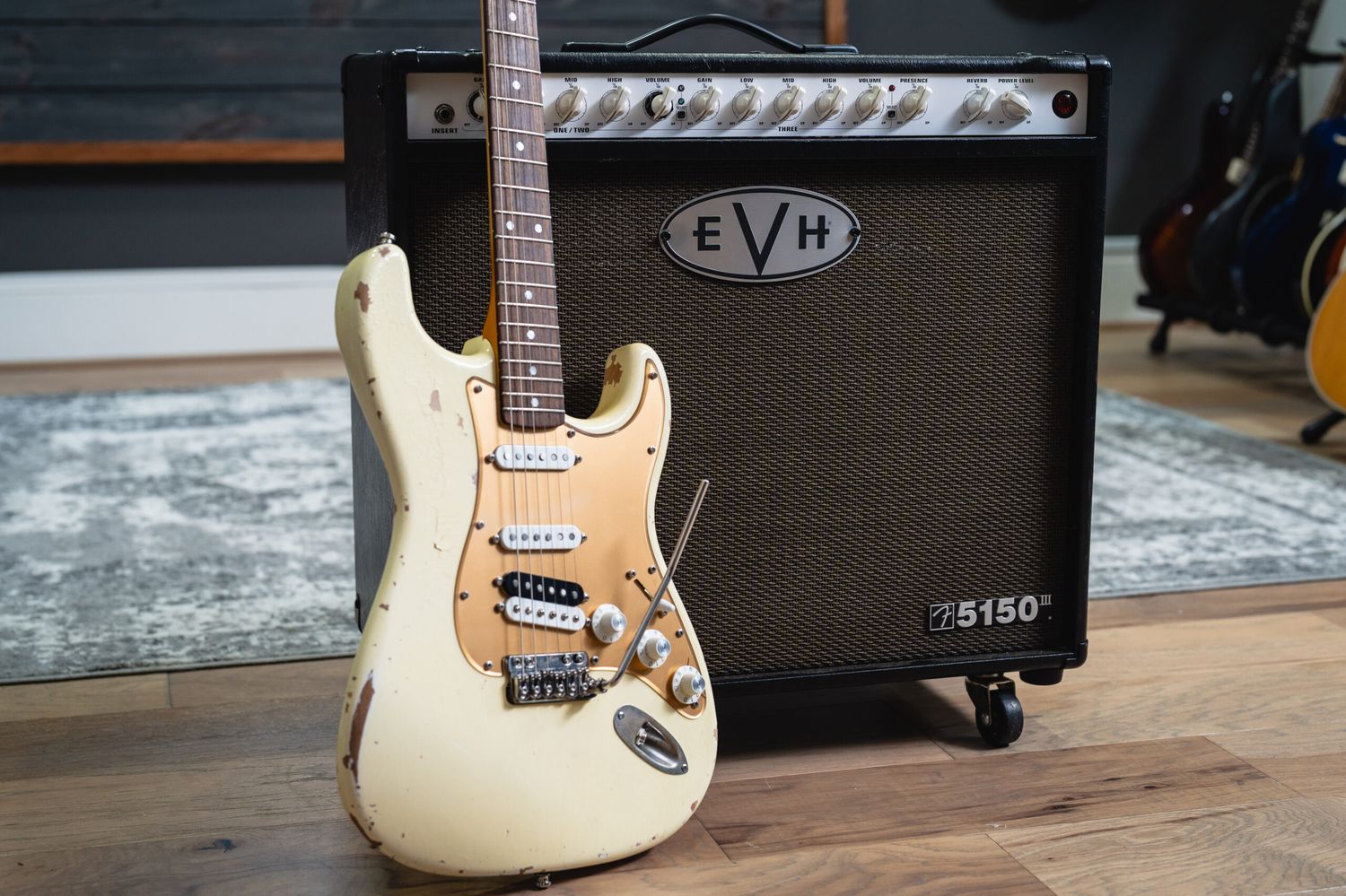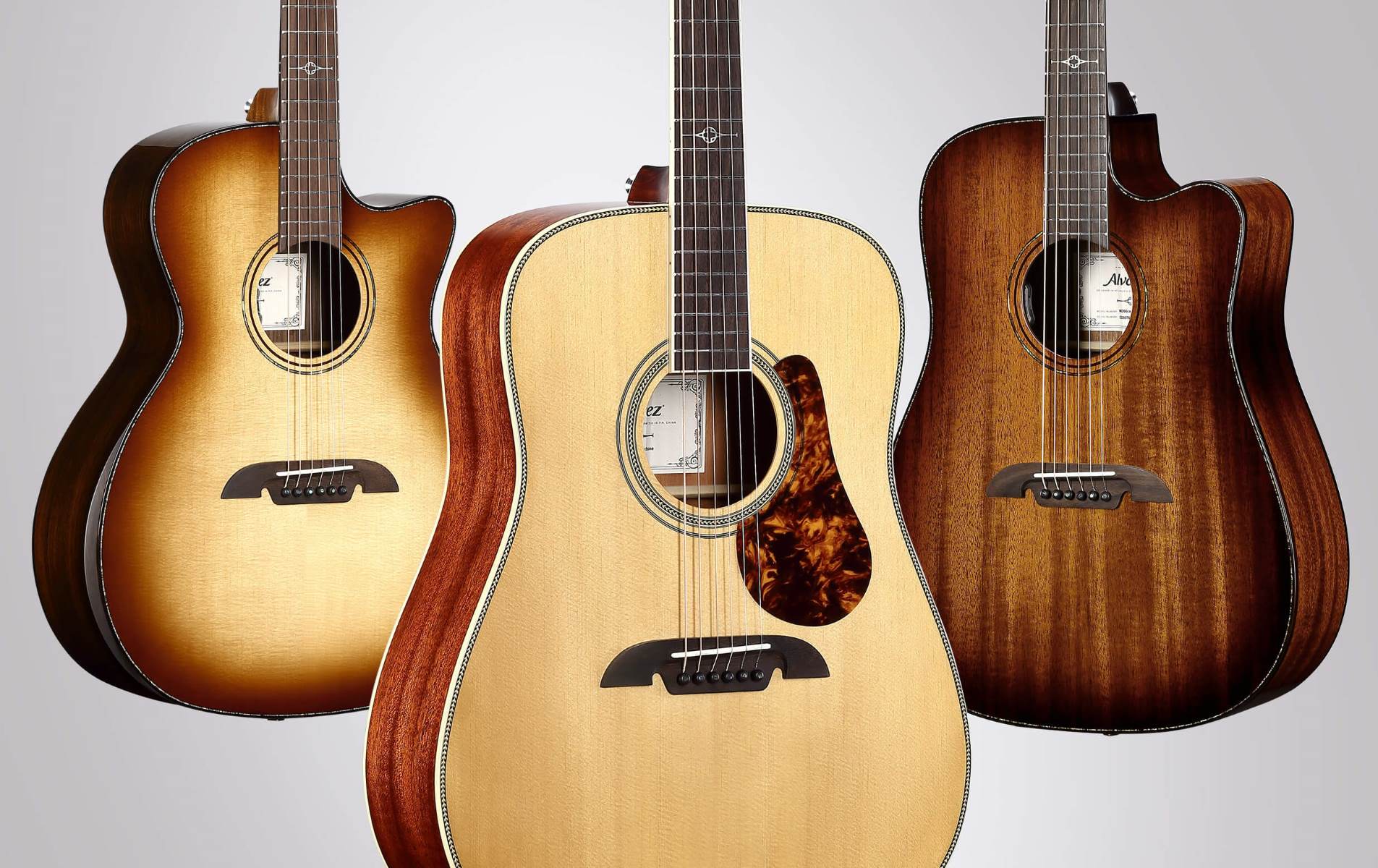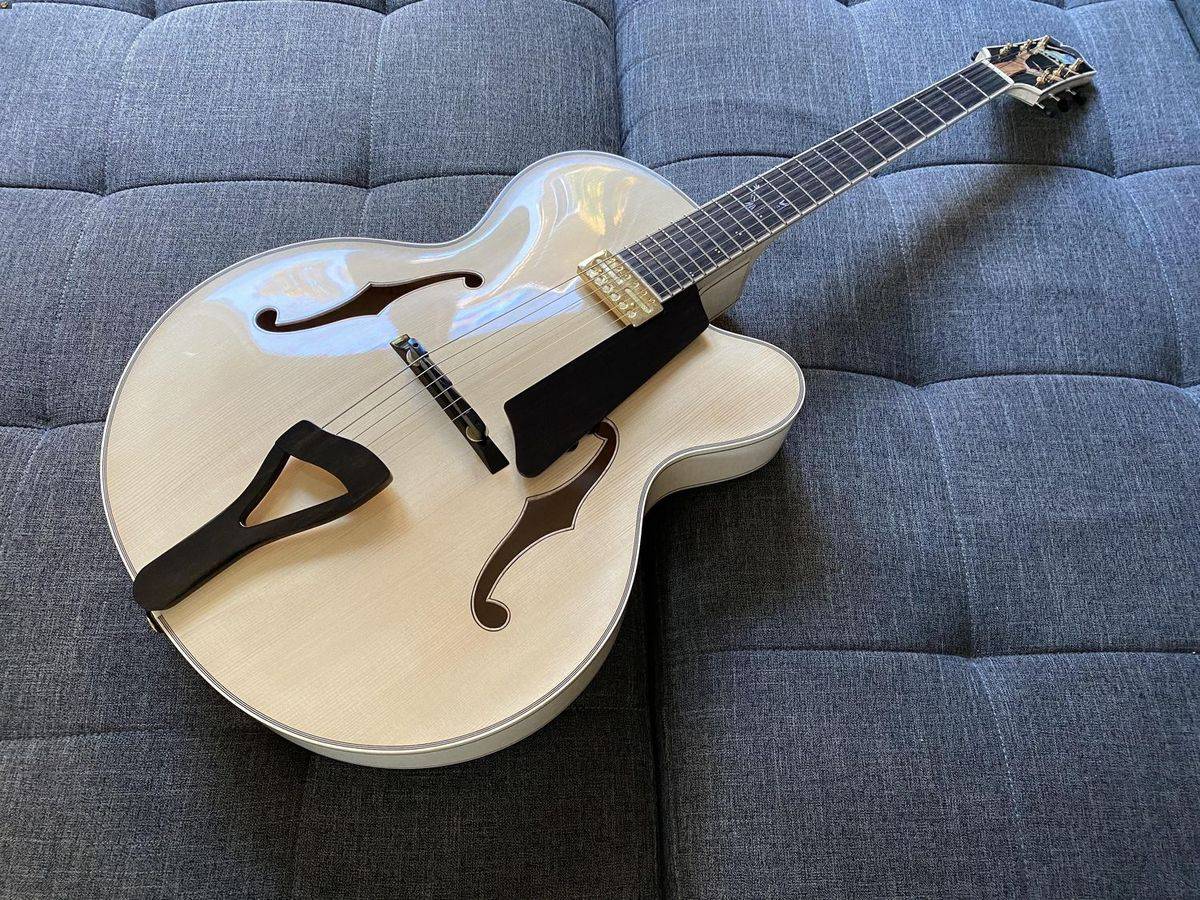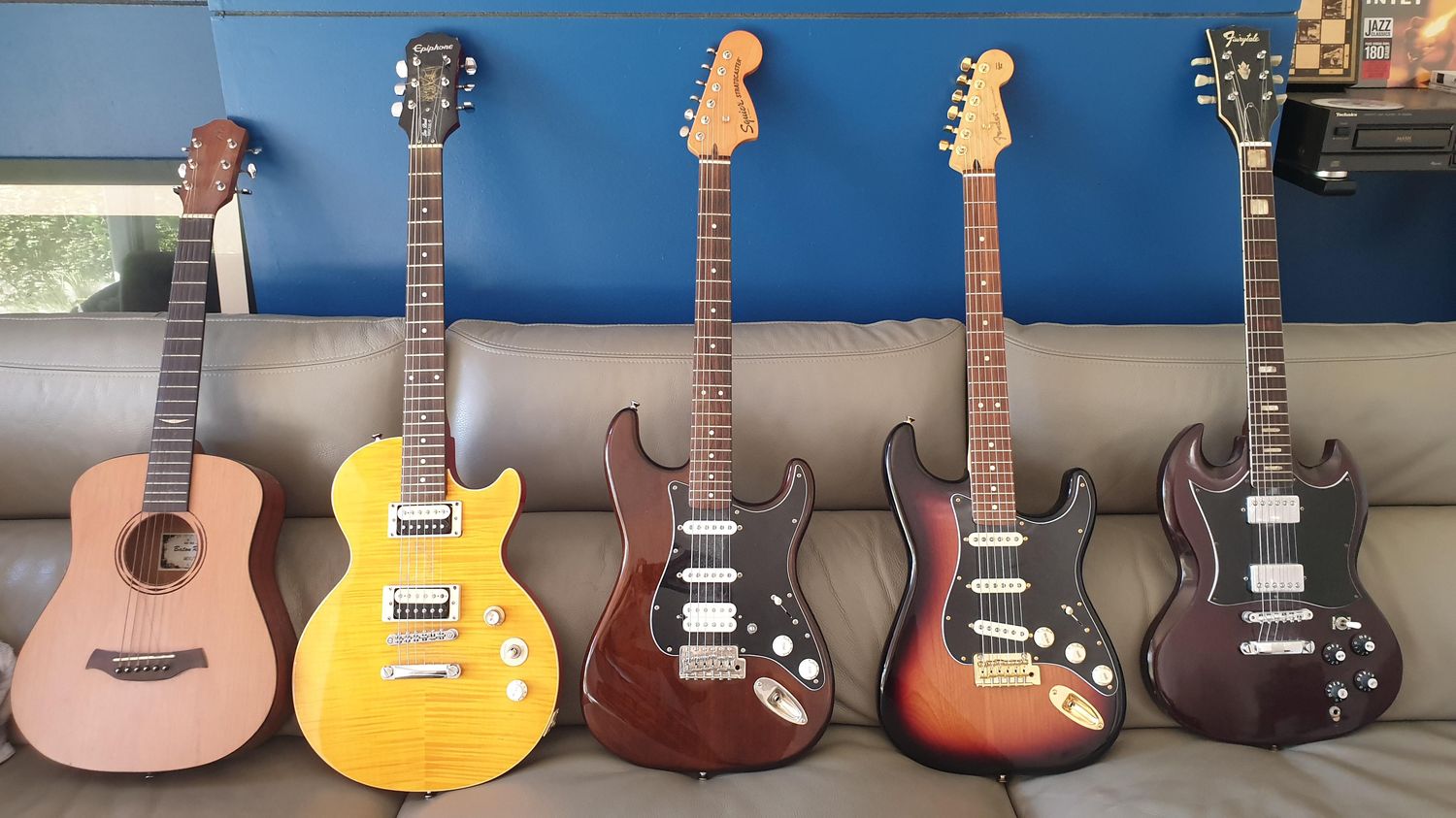Home>Instruments>Guitar>What Are The Dots On A Guitar


Guitar
What Are The Dots On A Guitar
Published: February 15, 2024
Discover the significance of the dots on a guitar fretboard and their role in learning and playing the guitar. Uncover the purpose and placement of these markers for easier navigation and improved technique. Gain insights into the function of guitar fretboard dots.
(Many of the links in this article redirect to a specific reviewed product. Your purchase of these products through affiliate links helps to generate commission for AudioLover.com, at no extra cost. Learn more)
Table of Contents
Introduction
Guitars are not only musical instruments but also objects of fascination and curiosity for many. One of the intriguing features of a guitar is the presence of dots on its fretboard. These dots, often found on the front face of the neck, serve a significant purpose and are not merely decorative elements. Understanding the role and significance of these dots can deepen one's appreciation for the instrument and provide valuable insights into its construction and design.
The dots on a guitar may seem like simple adornments at first glance, but they hold a crucial function that directly impacts the playing experience. Whether you are a seasoned guitarist or an aspiring learner, delving into the world of these dots can unravel a wealth of knowledge about the instrument's anatomy and practical usage.
In this comprehensive exploration, we will uncover the purpose, types, and placement of dots on a guitar, shedding light on their significance in enhancing the playing and learning experience. By the end of this journey, you will gain a newfound understanding of these unassuming yet pivotal markers on the fretboard.
The Purpose of Dots on a Guitar
While the dots on a guitar’s fretboard may appear to be purely decorative, their primary function is to provide visual markers for the player. These markers serve as a guide to help guitarists navigate the fretboard with ease and precision. As the player shifts their hand along the neck while playing, these dots act as reference points, aiding in the quick and accurate location of specific frets.
For beginners, these dots play a crucial role in learning and memorizing the fretboard. They provide a visual roadmap, making it easier to identify different positions and understand the instrument’s layout. This visual aid can significantly accelerate the learning process, allowing new guitarists to familiarize themselves with the instrument more effectively.
Furthermore, the dots on the fretboard contribute to the overall aesthetics of the guitar. While their primary function is practical, they also add a touch of visual appeal to the instrument. The design and placement of these markers can vary between different guitar models, adding a unique aesthetic element to each instrument.
Ultimately, the purpose of the dots on a guitar is to facilitate seamless navigation of the fretboard and enhance the learning and playing experience for guitarists of all levels. Their practical utility, combined with their visual contribution to the instrument’s design, makes them an integral and intriguing feature of the guitar.
Types of Dots on a Guitar
The dots on a guitar’s fretboard come in various types, each with its own distinct characteristics and visual appeal. The most common types of dots found on guitars include traditional dot markers, intricate inlay designs, and luminescent or reflective markers.
Traditional dot markers are typically small, circular markers placed at specific frets along the fretboard. These classic markers are often made of materials such as plastic, mother-of-pearl, or other visually appealing substances. They provide a simple yet effective visual reference for guitarists, aiding in swift navigation of the fretboard during performances or practice sessions.
Inlay designs offer a more elaborate and decorative approach to fretboard markers. These intricate designs can range from geometric patterns to ornate motifs, adding a touch of elegance and individuality to the guitar’s aesthetic. Inlay designs are often crafted with meticulous attention to detail, making them visually captivating while serving their practical purpose.
Another type of fretboard marker gaining popularity is the use of luminescent or reflective dots. These markers are designed to glow in low-light conditions, providing enhanced visibility during performances on dimly lit stages or in studio settings. The luminescent properties of these markers ensure that guitarists can easily locate fret positions even in challenging lighting environments, making them a practical choice for live performances and recording sessions.
Each type of dot marker contributes to the overall visual appeal and functionality of the guitar, offering players a range of options to suit their preferences and playing environments. Whether it’s the timeless simplicity of traditional dot markers, the artistic allure of inlay designs, or the practicality of luminescent markers, the variety of options allows guitarists to personalize their instruments while optimizing their playing experience.
Placement of Dots on a Guitar
The placement of dots on a guitar’s fretboard is strategically designed to provide visual cues and aid in fret navigation. These markers are positioned at specific frets along the neck, serving as reference points for players as they navigate the musical landscape of the instrument.
One of the most common placements for dot markers is at the 3rd, 5th, 7th, 9th, 12th, 15th, 17th, 19th, and 21st frets. These locations are chosen for their significance in helping guitarists identify key positions on the fretboard. The 3rd, 5th, 7th, and 9th frets provide essential early reference points, aiding beginners in familiarizing themselves with the instrument’s layout and facilitating the transition between lower and mid-range notes.
The 12th fret holds particular importance as it marks the halfway point between the guitar’s nut and bridge, effectively dividing the strings into two equal segments. This placement serves as a fundamental reference for octave positions and harmonics, making it a pivotal location for dot markers.
As the player progresses along the fretboard, the 15th, 17th, 19th, and 21st frets offer additional visual markers for higher positions, allowing guitarists to navigate the extended range of the instrument with precision and ease. The placement of these markers contributes to the overall accessibility and playability of the guitar, empowering players to explore a wide range of musical expressions.
Furthermore, the placement of dots can vary between different guitar models and designs. Some guitars feature additional markers on the side of the fretboard, visible to the player from a playing position, offering supplementary visual cues for fret navigation. This side dot placement enhances the instrument’s usability, especially in live performance settings where visibility of the front-facing markers may be limited.
Overall, the strategic placement of dots on a guitar’s fretboard is a carefully considered aspect of its design, aimed at providing players with clear and effective visual guidance as they explore the instrument’s sonic capabilities and express their musical creativity.
Conclusion
The dots on a guitar’s fretboard, often overlooked as mere embellishments, play a crucial role in enhancing the playing experience and aiding guitarists in their musical journey. These unassuming markers serve as invaluable visual guides, facilitating seamless navigation of the fretboard and contributing to the instrument’s overall aesthetic appeal.
By understanding the purpose, types, and placement of these dots, guitarists can gain a deeper appreciation for the thoughtful design and functionality of their instruments. Whether it’s the traditional simplicity of dot markers, the artistic allure of intricate inlay designs, or the practicality of luminescent markers, the variety of options allows players to personalize their instruments while optimizing their playing experience.
From assisting beginners in learning the fretboard to providing seasoned guitarists with essential visual cues during performances, these markers are indispensable companions on the musical journey. Their strategic placement at key frets ensures that players can navigate the instrument with precision and confidence, unlocking a world of creative possibilities and musical expression.
As guitarists strum, pick, and fret their way through melodies and chords, the dots on the fretboard stand as steadfast allies, guiding their fingers and inspiring their musical explorations. These unassuming markers, with their practical utility and visual allure, embody the harmonious blend of form and function that defines the artistry of guitar design.
In essence, the dots on a guitar’s fretboard are not just markers; they are silent collaborators in the creation of music, silently harmonizing with the player’s touch and vision. They represent the thoughtful craftsmanship and attention to detail that elevate the guitar from a mere instrument to a cherished companion on the melodic odyssey of musicians around the world.




